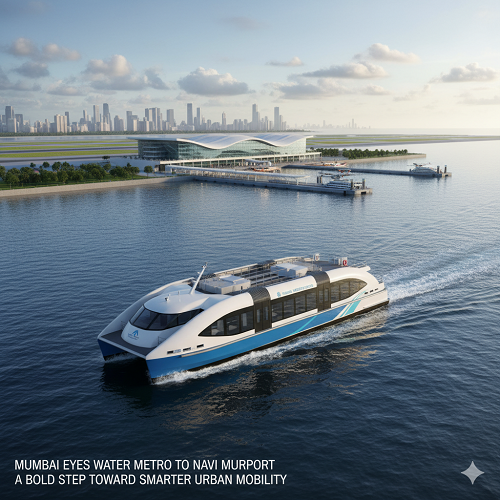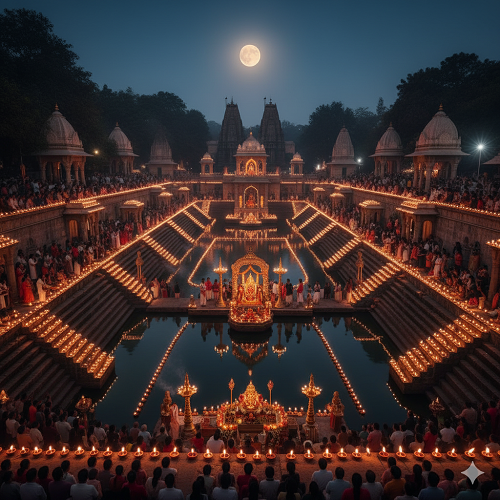
Maharashtra’s Landmark Judicial Leap: Full Budget Assured for the 50-Lakh Sq. Ft Bombay High Court Complex in Bandra
In a gesture that blends symbolism with administrative resolve, the Maharashtra government has pledged full financial support for the 50-lakh square foot Bombay High Court complex at Bandra (East). Spanning 30 acres, the new facility is envisioned as a modern judicial hub that merges architecture with accessibility, and ambition with accountability. Deputy Chief Minister and Finance Minister Ajit Pawar’s assurance that “funds will not be a constraint” reflects a state reimagining justice not just as a system, but as an experience.
The foundation stone ceremony brought together the state’s political and judicial leadership, including Chief Justice of India BR Gavai, Chief Minister Devendra Fadnavis, Deputy Chief Minister Eknath Shinde, and Chief Justice of the Bombay High Court Shree Chandrashekhar. Their presence signalled a convergence of institutional intent, uniting governance and jurisprudence in a shared mission: to create a space where justice is timely, transparent, and tangible.
Government’s Commitment to Timely Justice
At the event, Ajit Pawar reaffirmed a principle often overlooked in the din of governance, that justice is the first responsibility of a democracy. He announced that of the 30-acre land, 15 acres have already been handed over to the High Court, while the remaining 15 acres will be transferred by March 2026.
The proposed complex will include 3,750 car parking spaces and 1,000 two-wheeler slots, designed to support a city whose population, pace, and pressures demand foresight. Pawar’s commitment that “whatever budget is required will be provided” reflects fiscal realism matched with moral responsibility. It is an acknowledgment that justice delayed is often justice denied, and that infrastructure is the foundation on which justice stands.
A Measured Voice from the Judiciary
Even as the vision of grandeur took shape, Chief Justice of India BR Gavai offered a quiet but important reminder. Applauding the government’s dedication to judicial infrastructure, he urged that the new complex must represent purpose, not opulence.
“While maintaining the grandeur and iconic nature of the building, it must be ensured that there is nothing extravagant. Ultimately, it is a temple of justice, not a five-star hotel,” he said. The statement, simple yet profound, captured a core judicial truth, that justice thrives in integrity, not indulgence.
Responding to reports about lavish features, Gavai quipped, “I read that one lift will be shared by only two judges. I would like to say that judges are no more feudal lords. Whether a person belongs to the judiciary, executive, or legislature, we all exist only to serve the citizens.” His words reflected a cultural shift in India’s institutions, a movement from hierarchy to humility, from distance to service.
The Architecture of Accessibility
Chief Justice Shree Chandrashekhar described the project as “a promise of accessibility, dignity, modernity, and institutional excellence.” To him, the Bandra complex is not just concrete and glass, but continuity, a bridge between the historic Gothic edifice at Fort and the evolving face of Mumbai’s justice system.
He envisioned a space that is both efficient and empathetic, housing spacious courtrooms, libraries, mediation centers, digital records, multi-level parking, Wi-Fi connectivity, and chambers for lawyers and judges. The design, he said, is guided by inclusivity, with special attention to women, differently-abled litigants, and citizens who see the court not as a fortress, but as a forum.
In that vision lies the essence of reform. Modern infrastructure, when designed thoughtfully, can shape behaviour, nurture confidence, and make justice more accessible to those who need it most.
Governance and Architecture Converge
Chief Minister Devendra Fadnavis captured the deeper spirit of the project when he remarked, “The grandeur of this building should be democratic, not imperial.” His observation was both political and philosophical, reminding planners that justice should symbolize the strength of the people, not the power of the state.
He also emphasized practical inclusivity, urging adequate facilities for government pleaders, often the unsung participants in judicial processes. Calling the government “the biggest litigant,” Fadnavis noted the irony of pleaders sitting amid stacks of papers in cramped conditions. “Our pleaders spend hours in court,” he said, urging that their working environment reflect the dignity of their role.
On a lighter note, Fadnavis recalled that the historic Fort High Court was completed at a cost of ₹16,000, ₹300 less than the sanctioned budget. “This should inspire the PWD to complete the new building within or below the allocated budget,” he added, blending wit with a reminder of fiscal discipline.
A Golden Day for Maharashtra
Deputy Chief Minister Eknath Shinde described the occasion as “a golden day for Mumbai and Maharashtra,” affirming that all necessary clearances would be expedited. His tone carried optimism wrapped in realism, the recognition that institutions earn legitimacy not by announcements but by execution.
Quoting a Marathi saying, he added humorously, “Shahane loka ni courta chi payri nai chadavi” — wise people must not approach court. Yet, he added, “those who visit Mumbai will certainly want to see this new court complex.” The remark underscored the cultural pride attached to the project, positioning it as a civic landmark, not just an administrative facility.
The Larger Context
This initiative is more than an infrastructure story, it is a reflection of how democracies modernize. Justice delivery in India faces structural constraints, from inadequate courtrooms to overburdened systems. By investing in scale, technology, and accessibility, Maharashtra is acknowledging that justice is not only a moral ideal but an operational necessity.
When complete, the 50-lakh sq. ft Bombay High Court complex will be among the largest judicial campuses in the country, symbolizing the intersection of law, design, and governance. It will relieve congestion at the heritage Fort building, improve efficiency, and reimagine the citizen’s experience of the judicial system.
The New Architecture of Justice
The foundation stone laid in Bandra is not just the beginning of a construction project, it is the beginning of an institutional renewal. It signals a future where justice is not hindered by space, time, or access, but facilitated by design, technology, and intent.
In that sense, the new complex is more than an architectural achievement, it is a statement of values. It embodies what modern India aspires to be — efficient yet empathetic, ambitious yet grounded, and most importantly, democratic in both form and function.





